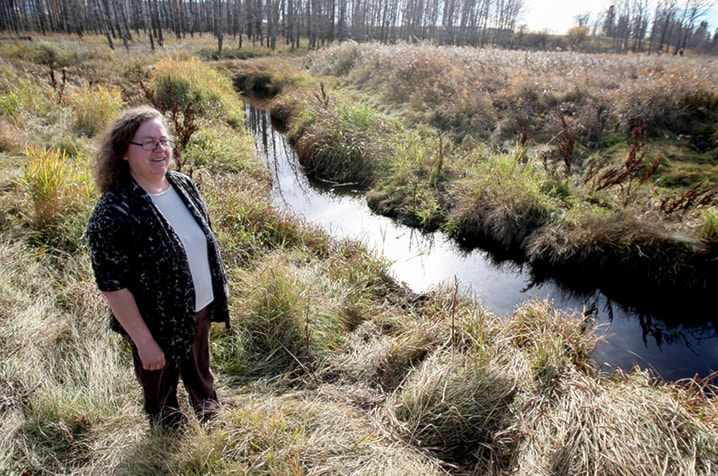Sometimes Mother Nature gets out of whack. Sometimes she gets a helping hand to get back on track.
That’s what a collaborative restoration project is intended do over the next five years along a small section of creek in Red Deer.
ReThink Red Deer president Kathy Parsons said on Tuesday that the Piper Creek Restoration Agriculture Project has received a $50,000 grant over five years from Environment Canada.
The project covers a 25-acre portion of Piper Creek sandwiched between the immediate southern edge of the city’s landfill site and an industrial area in Red Deer County. The city has a community garden site in the area.
The piece of creek land is small enough that they can take as little as $50,000 and do some experimental work to see what kind of things can be done to remediate a location like it, said Parsons.
“The intent of it is not only obviously to see if we can do some repair work, but also to use that as an opportunity to foster understanding about riparian issues, and how to go about remediating them in a wholistic kind of fashion.
“Bringing together the partnerships, we can offer opportunities to the public for direct education where they can get out there and get their hands dirty and see what it’s like and really begin to understand it as an ecosystem,” said Parsons.
The Alberta Riparian Habitat Management Society, better known as Cows and Fish, has done an initial inventory of the area. Inventories will be done again in year three and year five of the project to monitor improvements.
The inventory assessments will look at things like water quality, what kind of species are in the area now and later, and the results of restoring the natural habitat so it can be self-regenerating as time goes by.
Invasive weeds have been identified in the area and the project will try to remove them without the use of chemicals. Improving native tree and shrub cover could also be part of the restorative agriculture.
“The overall intent is trying to bring natural balance back to the location so that it is self-regenerating from this point forward,” Parson’s said.
They hope they can clearly demonstrate remedial actions that work, so it’s a learning opportunity to address “how can we move upstream or downstream to continue the work.”
“It’s a little snapshot on a little tiny creek ... but that doesn’t mean it can’t inform what might happen at the Red Deer River ... every piece of watershed that’s improved in a natural manner is a bonus for all Albertans, not just people in Red Deer,” she said.
The Piper Creek land came to their attention because of the nearby city community gardens. It was an opportunity to do something around the local watershed as part of the local food system, she said.
Usually riparian projects are rural. But in this case, the land is unique because it’s within city limits — although at one point it was farmed.
A field days event is being offered on Thursday and Friday when the project’s steering committee will share the results of the initial assessment (conducted on Sept. 3), and draft the riparian restoration plan. Anyone interested in registering must do so by the end of today. Go to www.rethinkreddeer.ca to register.
The project is a collaborative effort initiated by ReThink Red Deer — a volunteer group focused on sustainability issues — and the Red Deer River Watershed Alliance, Red Deer River Naturalists, Waskasoo Environmental Education Society, Alberta Food Matters, the Canadian Association for Rainwater Management — Prairie Chapter, Red Deer County and the City of Red Deer (as landowner holding observer status).
